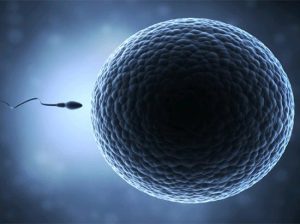 Sperm Test Normal Values
Sperm Test Normal Values
spermiogram; It gives information about the volume, density, consistency, pH, liquefaction time, number of sperms, motility rate and structure of semen. Semen is evaluated in terms of both quality and quantity.
The spermiogram is the first step in evaluating the sperm production capacity of the male ovaries and whether the male genital system is healthy.
During ejaculation, there should be a certain number of normal and motile sperm in the semen sample so that fertilization can occur.
Sperm count, the amount of sperm with good motility, the ratio of normal sperm to abnormally shaped sperm are evaluated. In addition, the amount, color, pH, presence of leukocytes and liquefaction of the semen sample are evaluated.
Volume :
According to WHO criteria, semen should be between 2 ml and 6 ml. Semen that is more than 6 ml is called hyperspermic, and 1 ml or less is called hypospermic. In terms of pregnancy, it is undesirable to have both conditions.
Color :
Normally, semen is opaque and grayish in color. It can be seen yellow in long-term sexual abstinence, red-brown in the presence of erythrocytes (red blood cells) in the semen, and colorless after long-term antibiotic use.
Smell :
Semen smells like “horse chestnut flower”, probably due to oxidation of sperm secreted by the prostate gland.
PH :
Normal semen pH is between 7.2 and 8. Conditions with a pH above 8 indicate acute infection or delayed measurement. In cases of azoospermia where the pH is below 7, obstruction of the drainage channels, agenesis of the accessory glands, chronic infections of the seminal vesicle and mixing of the urine with the semen should be considered.
Likefaction (Semen Resolution):
Semen, which is fluid during ejaculation and is “coagulated (=coagulated)” by the effect of the “protein kinase” enzyme secreted by the vesicle seminalis, should dissolve spontaneously within 10-20 minutes, that is, it should become liquefied. A malfunction such as prolonged liquefaction time indicates an increase in semen viscosity, which is undesirable.
Viscosity :
Normally, semen is slightly viscous. Viscosity may be increased in chronic infections such as prostatitis and vesiculitis.
According to the World Health Organization (WHO) criteria, normal values in the spermiogram are;
- Volume: 1.5-6.5 ml
- Sperm concentration: 20 million/ml and above
- Sperm motility: 50% and more
- Sperm structure (morphology): 14% and above should be in normal structure (according to Kruger criteria). Sperm morphology is evaluated with a special staining technique.
Finding the above values after sperm analysis does not definitively indicate that pregnancy will occur. For example; While the spouses of men with a sperm concentration of 10 million/ml may conceive, the spouses of men with a sperm concentration of 60 million/ml may not be able to conceive.
The motility of the sperms is also examined in certain time periods. Classification is made according to movement types. Grade 4 is the normal form of movement that moves quickly forward and its rate is important. 0 degree is that it does not move.
 Sperm Test Normal Values
Sperm Test Normal Values